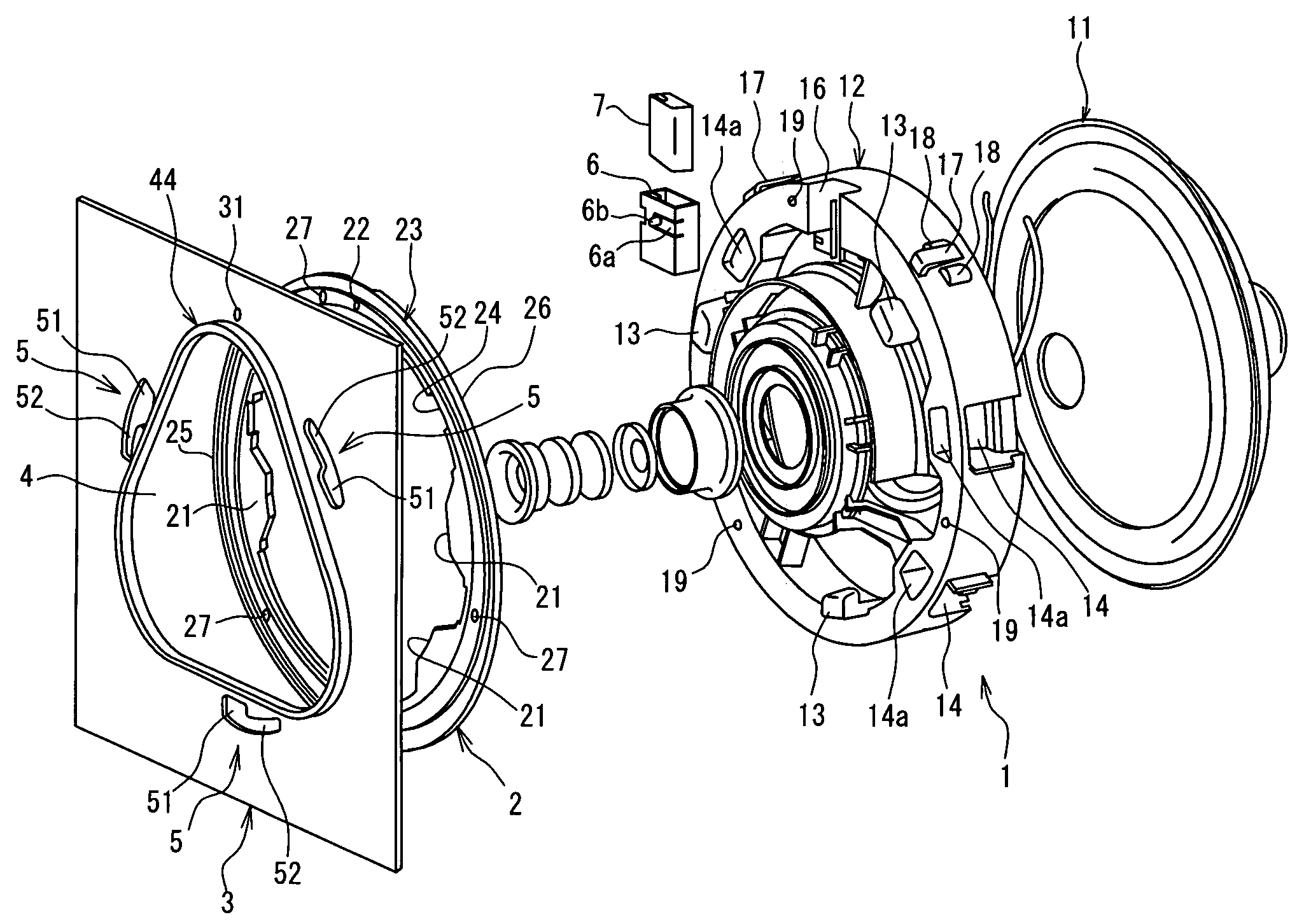Speaker for vehicle and mounting structure of the speaker
a technology for vehicle speakers and mounting structures, which is applied in the direction of piezoelectric/electrostrictive transducers, transducer types, transportation and packaging, etc., can solve the problems of increasing the number of parts, high manufacturing cost, and requiring a large amount of man-power for the installation of the speaker unit, so as to improve the installation efficiency, reduce the sliding resistance at rotation, and improve the acoustic characteristic
- Summary
- Abstract
- Description
- Claims
- Application Information
AI Technical Summary
Benefits of technology
Problems solved by technology
Method used
Image
Examples
Embodiment Construction
[0107]An embodiment of the present invention will be described hereinbelow with reference to the drawings. In FIGS. 1 to 3, reference numeral 1 designates a speaker unit, numeral 2 represents a sealing member, and numeral 3 denotes a door inner panel acting as a panel member. The speaker unit 1 is mainly composed of a speaker body (which will hereinafter be referred to simply as a “speaker”) 11 and a speaker housing (which will hereinafter be referred to simply as a “housing”) 12 for holding the speaker 11, with functional parts such as coils being held in the housing 12.
[0108]In addition, in this embodiment, the housing 12 is made of a resin as one-body construction, and as shown in FIGS. 2, 8, 9 and 14, on the rear surface side of the housing 12, there are formed a plurality of claws 13 for fixedly securing the speaker unit 1 to the door inner panel 3.
[0109]Still additionally, as FIGS. 1 to 3 show, in the door inner panel 3 on which the speaker unit 1 is mounted, there is made an ...
PUM
 Login to View More
Login to View More Abstract
Description
Claims
Application Information
 Login to View More
Login to View More - R&D
- Intellectual Property
- Life Sciences
- Materials
- Tech Scout
- Unparalleled Data Quality
- Higher Quality Content
- 60% Fewer Hallucinations
Browse by: Latest US Patents, China's latest patents, Technical Efficacy Thesaurus, Application Domain, Technology Topic, Popular Technical Reports.
© 2025 PatSnap. All rights reserved.Legal|Privacy policy|Modern Slavery Act Transparency Statement|Sitemap|About US| Contact US: help@patsnap.com



